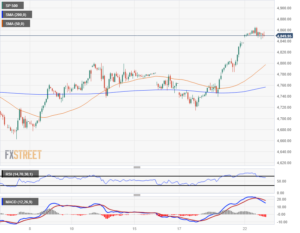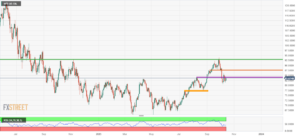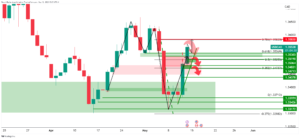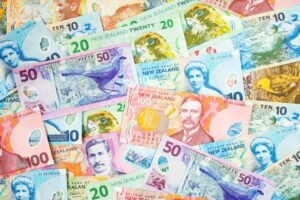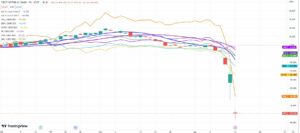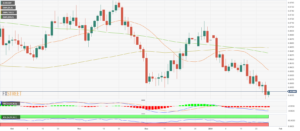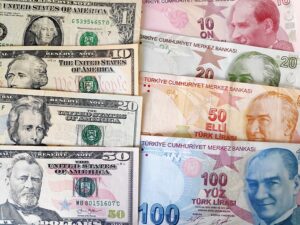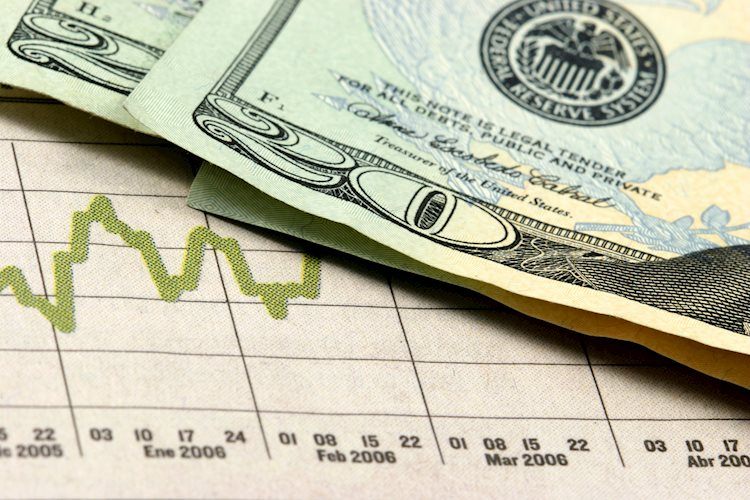
- The DXY rose by more than 0.80% to 103.90 on Friday
- US Nonfarm Payrolls came in higher than expected for January.
- US bond yields are sharply increasing as markets push to May the start of the easing cycle.
The US Dollar (USD) rose to 103.90 on Friday’s Dollar Index (DXY) chart, mainly fueled by a promising labor market report that has convinced markets a March rate cut is not in the cards.
Fed Chair Powell reinforced the idea that a rate cut in March is unlikely despite ongoing market speculation. In line with that, he stated that the bank will monitor incoming data to set the timing of the easing cycle. As the US labor market remains tight, the bank might consider delaying rate cuts.
Daily digest market movers: US Dollar rallies as markets digest strong labor market data
- Unemployment for January held steady at 3.7%, lower than the 3.8% expected.
- Nonfarm Payrolls increased significantly, surpassing expectations for January. A reported 353K additional jobs were created in the US against a projected 180K, indicating robust job market growth.
- Average Hourly Earnings for January, as per US Bureau of Labor Statistics, were up by 0.6% MoM, exceeding the consensus of 0.3%.
- Annual Average Hourly Earnings for 2024 arrived at 4.5%, surpassing the previous 4.4%.
- US bond yields sharply rose with 2-year, 5-year and 10-year bonds trading at rates of 4.38%, 4.00% and 4.05%, respectively.
- According to the CME FedWatch Tool, the odds of a cut in March plummeted to 20%.
Technical Analysis: DXY bulls show resilience and jump above the 200-day SMA
The indicators on the daily chart indicate a dominance of buying pressure, despite some contrasting signals. The Relative Strength Index (RSI) gliding on a positive slope and in positive territory suggests a build-up of buying momentum, which is further solidified by the rising green bars of the Moving Average Convergence Divergence (MACD). However, mixed signals emanate from the Simple Moving Averages (SMAs). Although the index is above both the 20-day and 200-day SMAs, signifying a bullish outlook, it remains below the 100-day SMA, indicating a bearish hindrance.
Interest rates FAQs
Interest rates are charged by financial institutions on loans to borrowers and are paid as interest to savers and depositors. They are influenced by base lending rates, which are set by central banks in response to changes in the economy. Central banks normally have a mandate to ensure price stability, which in most cases means targeting a core inflation rate of around 2%.
If inflation falls below target the central bank may cut base lending rates, with a view to stimulating lending and boosting the economy. If inflation rises substantially above 2% it normally results in the central bank raising base lending rates in an attempt to lower inflation.
Higher interest rates generally help strengthen a country’s currency as they make it a more attractive place for global investors to park their money.
Higher interest rates overall weigh on the price of Gold because they increase the opportunity cost of holding Gold instead of investing in an interest-bearing asset or placing cash in the bank.
If interest rates are high that usually pushes up the price of the US Dollar (USD), and since Gold is priced in Dollars, this has the effect of lowering the price of Gold.
The Fed funds rate is the overnight rate at which US banks lend to each other. It is the oft-quoted headline rate set by the Federal Reserve at its FOMC meetings. It is set as a range, for example 4.75%-5.00%, though the upper limit (in that case 5.00%) is the quoted figure.
Market expectations for future Fed funds rate are tracked by the CME FedWatch tool, which shapes how many financial markets behave in anticipation of future Federal Reserve monetary policy decisions.
- SEO Powered Content & PR Distribution. Get Amplified Today.
- PlatoData.Network Vertical Generative Ai. Empower Yourself. Access Here.
- PlatoAiStream. Web3 Intelligence. Knowledge Amplified. Access Here.
- PlatoESG. Carbon, CleanTech, Energy, Environment, Solar, Waste Management. Access Here.
- PlatoHealth. Biotech and Clinical Trials Intelligence. Access Here.
- Source: https://www.fxstreet.com/news/us-dollar-edges-lower-following-strong-nfps-202402021754
- :has
- :is
- :not
- $UP
- 2%
- 2024
- 28
- 32
- 33
- 4
- 5
- 90
- a
- above
- Additional
- against
- Although
- an
- analysis
- and
- Animate
- anticipation
- ARE
- around
- arrived
- AS
- asset
- At
- attempt
- attractive
- average
- Bank
- Banks
- bars
- base
- bearish
- because
- below
- Bets
- bond
- Bond yields
- Bonds
- boosting
- borrowers
- both
- Bullish
- Bulls
- Bureau
- bureau of labor statistics
- Buying
- by
- came
- Cards
- case
- cases
- Cash
- central
- Central Bank
- Central Banks
- Chair
- Changes
- charged
- Chart
- Closes
- CME
- Consensus
- Consider
- content
- Convergence
- convinced
- Core
- core inflation
- Cost
- country’s
- created
- Currency
- Cut
- cuts
- cycle
- daily
- data
- decisions
- delaying
- depositors
- Despite
- Digest
- Divergence
- Dollar
- dollar index
- dollars
- Dominance
- Dxy
- each
- Earnings
- easing
- economy
- effect
- ends
- ensure
- example
- expanded
- expectations
- expected
- Falls
- FAQ
- Fed
- fed funds rate
- Federal
- federal reserve
- Figure
- financial
- Financial institutions
- FOMC
- For
- from
- fueled
- funds
- further
- future
- generally
- Global
- Gold
- Green
- Growth
- Have
- Hawkish
- he
- headline
- Held
- help
- High
- higher
- hindrance
- holding
- How
- However
- HTTPS
- idea
- if
- in
- Incoming
- Increase
- increased
- increasing
- index
- indicate
- indicating
- inflation
- inflation rate
- influenced
- instead
- institutions
- interest
- Interest Rates
- investing
- Investors
- IT
- ITS
- January
- Job
- Jobs
- jpg
- jump
- labor
- labor market
- LEND
- lending
- LIMIT
- Line
- Loans
- lower
- lowering
- MACD
- mainly
- make
- mandate
- many
- March
- Market
- Market Report
- Markets
- May..
- means
- meetings
- might
- mixed
- module
- mom
- Momentum
- Monetary
- Monetary Policy
- money
- Monitor
- more
- most
- Movers
- moving
- moving average
- moving averages
- Nonfarm
- Nonfarm Payrolls
- normally
- Odds
- of
- on
- ongoing
- Opportunity
- or
- Other
- Outlook
- overall
- overnight
- paid
- Park
- Payrolls
- per
- Place
- placing
- plato
- Plato Data Intelligence
- PlatoData
- policy
- positive
- Powell
- pressure
- previous
- price
- projected
- promising
- Push
- pushes
- raising
- rallies
- range
- Rate
- Rates
- relative
- relative strength index
- Relative Strength Index (RSI)
- remains
- report
- Reported
- Reserve
- resilience
- respectively
- response
- Results
- Rise
- Rises
- rising
- robust
- ROSE
- rsi
- Savers
- set
- shapes
- show
- signals
- significantly
- signifying
- Simple
- since
- Slope
- SMA
- SMAs
- some
- speculation
- Stability
- start
- starts
- stated
- statistics
- steady
- strength
- Strengthen
- strong
- substantially
- Suggests
- surpassing
- Target
- targeting
- territory
- than
- that
- The
- the Fed
- their
- they
- this
- though?
- timing
- to
- tool
- Trading
- unlikely
- us
- US banks
- US Dollar
- USD
- usually
- View
- week
- weigh
- were
- which
- will
- winning
- with
- yields
- zephyrnet

